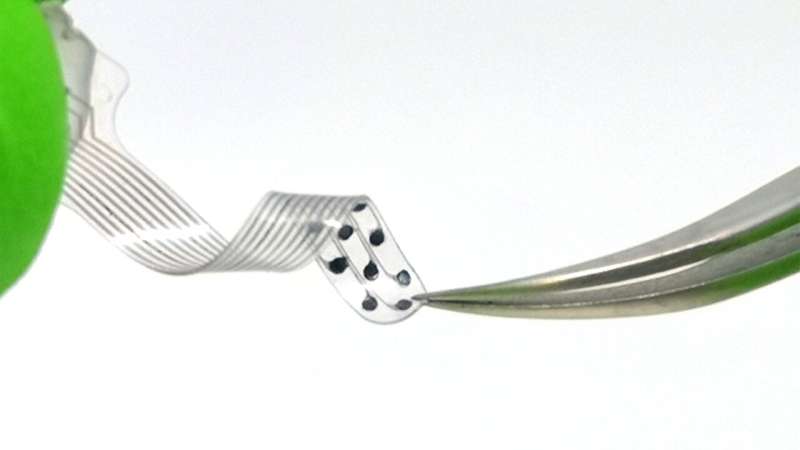Developing next-generation soft hearing implants

Close to a half-million people around the world suffer from serious hearing impairments. In some cases, they cochlear and other types of implants have good results. Yet these devices do not help people whose inner ear is damaged or whose auditory nerve does not function properly.
For these patients to recover their sense of hearing, electrical signals must be sent directly to the auditory brainstem. The neuroprosthetic used for this purpose is called an auditory brainstem implant, or ABI. Yet the outcomes of ABIs are mixed. What's more, clinical ABIs are stiff and cannot conform precisely to the curvature of the auditory brainstem.
To address this problem, Stéphanie Lacour's team at Ecole Polytechnique Federale de Lausanne (EPFL)'s Laboratory for Soft BioElectronic Interface (LSBI) worked with clinicians from Harvard Medical School and Massachusetts Eye and Ear to develop a soft electronic interface. The highly elastic implant conforms neatly to the curved surface of the auditory brainstem, and can therefore send highly targeted electrical signals. It has been tested successfully on mice—the implant has a surface area only 0.25 mm2, and has now been produced at a size suitable for human use and in a form that is compatible with current surgical techniques. It will undergo further study in preparation for human trials. The researchers' study was just published in Science Translational Medicine.
The new implant consists of a conformable array of platinum electrodes encased in silicone. "We focused on platinum because it's already used widely in clinical settings," says Nicolas Vachicouras, a post-doc at EPFL's School of Engineering and the article's lead author.
Unfortunately, platinum is a rigid metal that cannot be distorted without being damaged. The researchers overcame this hurdle by applying the traditional Japanese paper-cutting technique called kirigami, etching a Y-shaped pattern into metalized plastic segments. Then they machined the metal at the micron scale using techniques commonly found in the microfabrication of integrated circuits. The result is a very compliant and highly conductive electrode implant.
The EPFL researchers are already eyeing other applications. "The properties of our device would be of value for all sorts of implantable neuroprosthetics," says Stéphanie Lacour, "such as those used to stimulate or record neural activity in the spine, brain or even peripheral nerves."
More information: N. Vachicouras el al., "Microstructured thin-film electrode technology enables proof of concept of scalable, soft auditory brainstem implants," Science Translational Medicine (2019). stm.sciencemag.org/lookup/doi/ … scitranslmed.aax9487


















